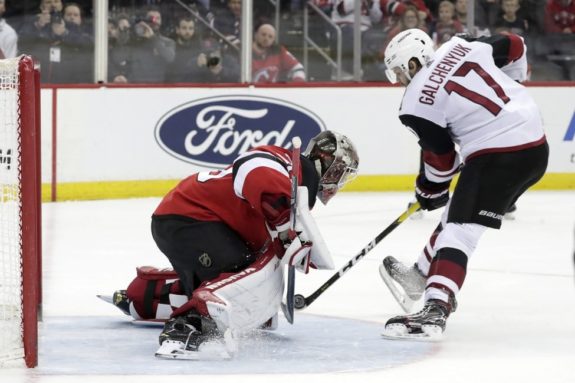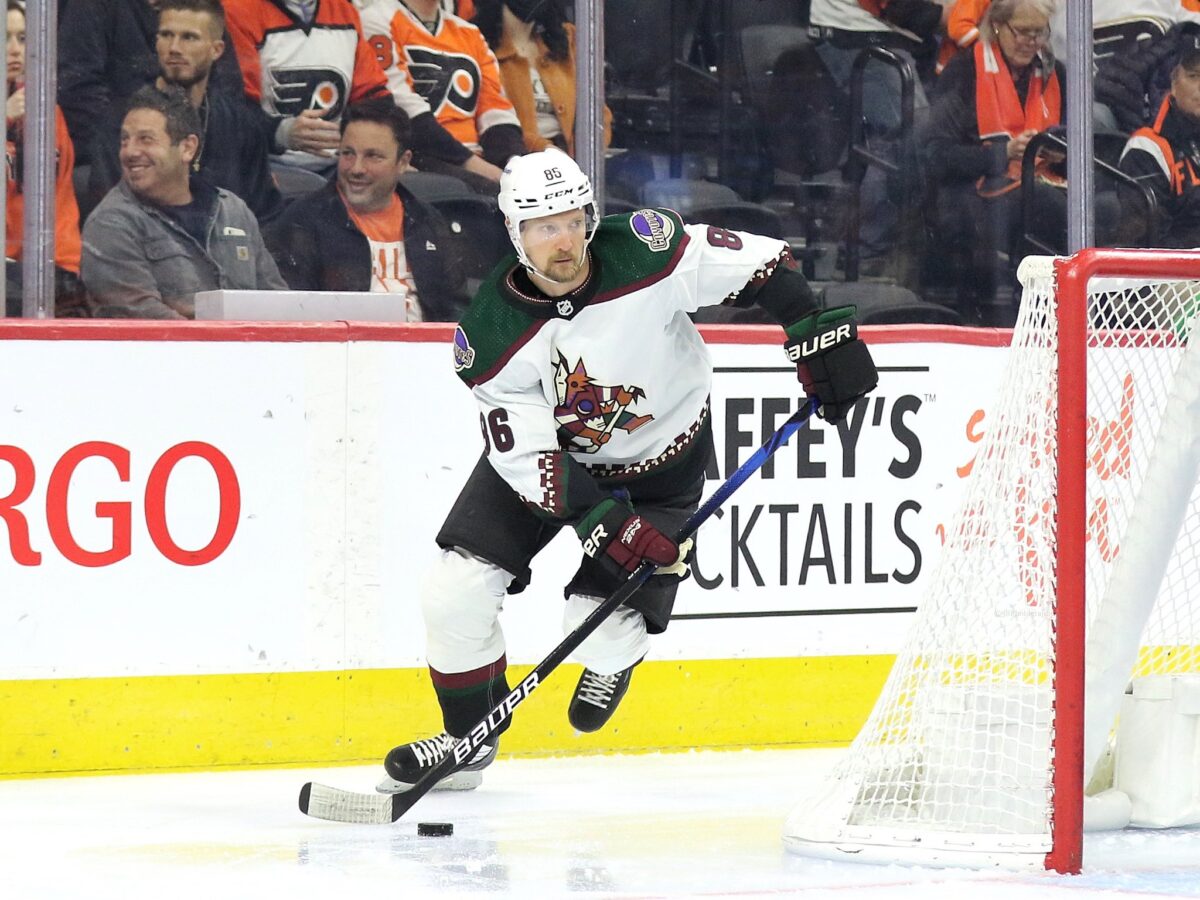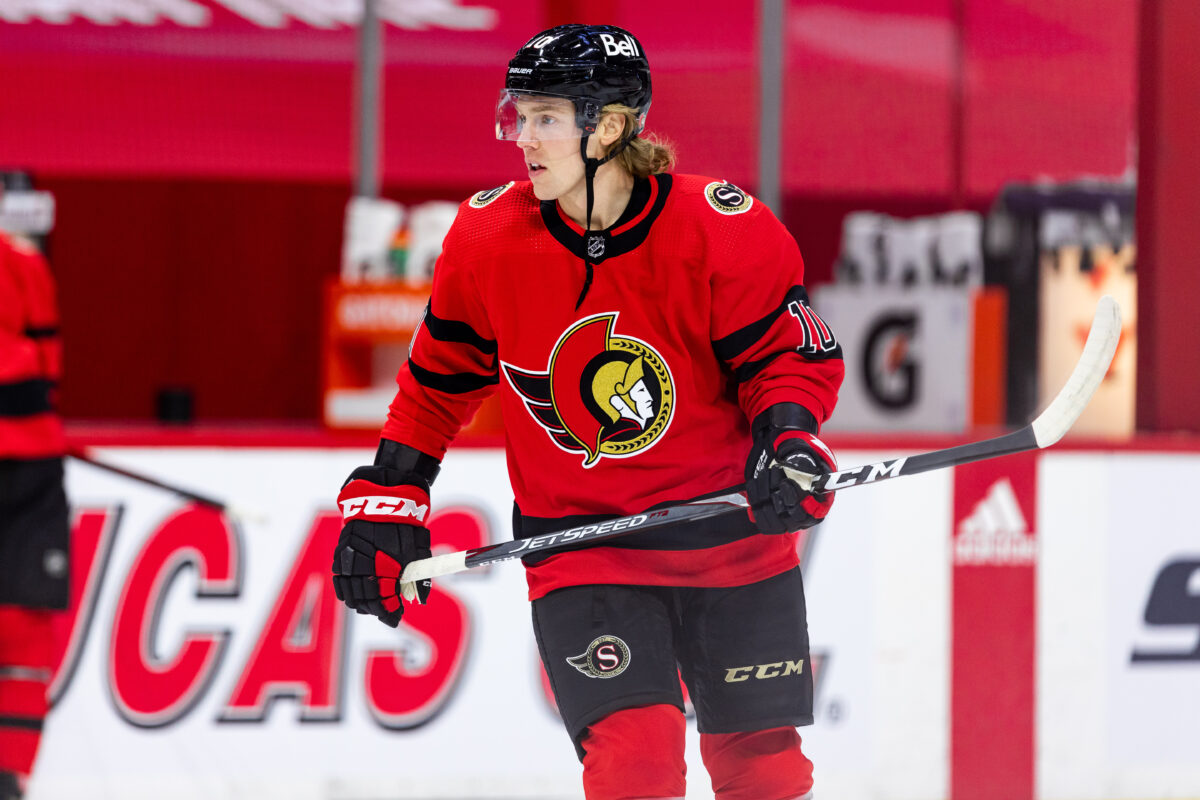The Nashville Predators and Arizona Coyotes have completed seven trades together, with their latest coming two years ago. Back on Feb. 8, 2019, the Coyotes sent Adam Helewka and Laurent Dauphin to Nashville for Emil Pettersson. None of the three players would play a game at the NHL level for their new clubs, and only Dauphin remains in an NHL role as a member of the Montreal Canadiens. Both teams are on different trajectories in terms of success as we reach the mid-way point of the 2021-22 regular season.
On paper, the Coyotes entered this season as a team undergoing changes, and with changes come growing pains. Being the league’s second-to-last place team is a bitter pill to swallow but an important step to rebuilding a franchise in desperate need of a spark. They also hold a myriad of pending unrestricted and restricted free agents, making them a prime target to attract rental deals from teams looking to add an extra piece or two for a deeper playoff push. With rumors circulating on the possible movement of defenseman Jakob Chychrun, Arizona will certainly be a hot spot for activity in the oncoming weeks. Here are some targets the Predators could be aiming for.
Alex Galchenyuk
Considering someone like Alex Galchenyuk may seem perplexing at first, a bottom-six player on one of the league’s worst teams and a journeyman at this stage in his career. He’s played for a total of five teams in the last three seasons, choosing to sign back with the Coyotes in the 2021-22 season. In 18 games this season, he’s amassed just five assists and is on pace for one of his worst seasons statistically. His puck possession metrics are also down for the first time in his career, with a Corsi For percentage at 43.4% and a Fenwick For percentage of 44%. With all that said, why should the Predators consider him?

It’s worth noting that Galchenyuk is best utilized in a role where he’s seeing regular ice time, both at even strength and on the power play. This is something he hasn’t been given in his second stint with the Coyotes, averaging 12:53 of ice time per game and playing an average of 17.9 shifts per game. He’s also played an average of 0:57 on the power play, which is abysmal for his abilities. At his best, Galchenyuk was a 30-goal scorer in the 2015-16 season, averaging 2:37 of ice time while working the point. His wrist shot was never considered lethal, but it was accurate and unpredictable. There is still gas in the tank at 27, and there’s no reason he can’t hit his stride on the Predators’ second power-play unit. This would give the team two waves of offensive threats and could prove to be the difference in a tough playoff series.
Related: Blues Can’t Afford to Get in on Jakob Chychrun Sweepstakes
He comes cheap at $750,000 and is on an expiring contract. If he fits well with the team, he could even return on an affordable contract and would be considered an upgrade over the Predators’ current fourth-line center of Michael McCarron. Most importantly, it won’t cost the team too much to acquire him, making him a good candidate to pursue.
Anton Stralman
While he signed a three-year deal with the Florida Panthers on July 1, 2019, it took just one and a half seasons for Anton Stralman to be traded to the Coyotes. The 35-year-old looked good in Florida, however, it was his cap hit that ultimately forced general manager Bill Zito to move. Now, in the final year of his deal, he should attract some attention from teams looking to beef up their blue line.

What Stralman can bring to Nashville mainly stems from the amount of ice time he can eat up and help preserve the likes of Roman Josi and Mattias Ekholm. Stralman can average 20-25 minutes per night, play the penalty kill (he averages 2:33 per game, good for third on the Coyotes), and be a stabilizing presence in a top-four role. The Predators would have plenty of options in all situations, rolling out Josi and one of Alexandre Carrier or Dante Fabbro, followed by Ekholm with Stralman.
Your depth, in transition, becomes Matt Tennyson and Matt Benning, who can both step in when called upon and not hurt the team defensively. Both Tennyson and Benning played on Jan. 20 in a 5-2 victory over the Winnipeg Jets. It became evident quickly that the defensive structure looked sharper compared to a line-up that featured Ben Harpur and Philippe Myers.
Ryan Dzingel
While a name like Phil Kessel is garnering interest in the rumor mill, general manager David Poile should steer clear of trading a package of assets for a few months of his services. Instead, Ryan Dzingel could be acquired for relatively cheap and contribute. The 29-year-old can play both center or wing, still possesses a quality wrist shot, and provides secondary scoring on one of the Predators’ two powerplay units. Dzingel previously put up two consecutive 20-goal seasons as a member of the Ottawa Senators and Carolina Hurricanes but has since taken a step back, unable to mesh with the Coyotes and during his return to Ottawa.

A healthy Dzingel can be a major factor for a Predators team that can pair him up with someone who can find him in tight areas, like Josi or Matt Duchene. His ability to circle back on the half-wall and fire off a low shot to create rebounds in the high-danger areas could also be of value. Dzingel makes just $1.1 million this season and is an unrestricted free agent after the year.
There are plenty of options on an Arizona team destined to be sellers at the trade deadline on March 21, including several low-cost and potentially high reward names. Chychrun and Kessel are also hot commodities that will likely net huge returns, and only three forwards on the team have contracts after the 2021-22 season. Nashville should be on high alert over the next couple of weeks and keep a finger on the pulse in Arizona, as they’ll be big-time sellers come March.
